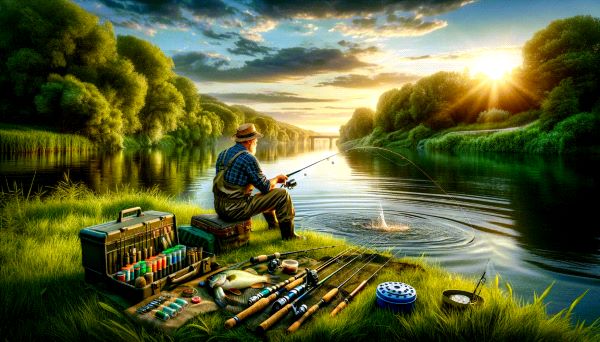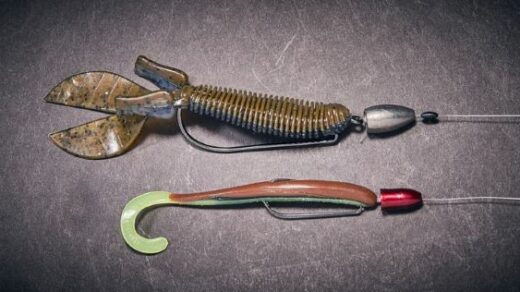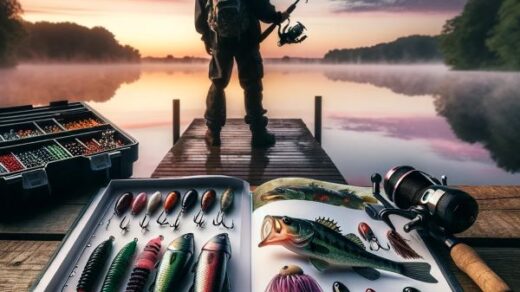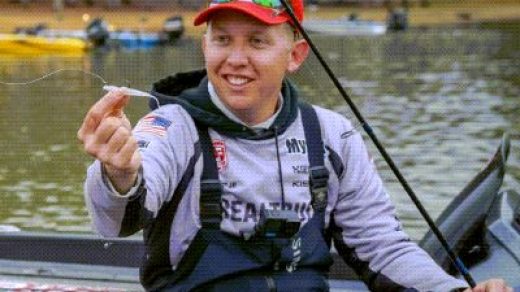Expert Tips and Strategies for Bass Fishing
Bank fishing for bass, a popular yet challenging angling technique, offers the thrill of the catch without the need for a boat. This guide, tailored for both novice and seasoned anglers, provides comprehensive strategies to elevate your bank fishing experience.

Essential Gear and Techniques for Bank Fishing Success
Fishing Gear Essentials
Successful bank fishing starts with the right equipment. A versatile rod and reel combo, suitable for various lures and techniques, is fundamental. Spinning rods are preferred for their ease of use and adaptability. Reels should have a smooth drag system and be capable of handling different line types, from monofilament to braided lines.
Lure Selection
Choosing the right lure is critical. Topwater lures, crankbaits, and soft plastics are effective for bank fishing. Topwater lures create a surface disturbance, attracting bass in shallow waters. Crankbaits, ideal for covering a lot of water, can dive to different depths, while soft plastics mimic natural prey, perfect for finesse fishing.
Techniques for Effective Casting
Casting techniques are pivotal. Practice underhand and sidearm casts to navigate under low-hanging trees and tight spots. Mastering these casts increases accuracy and reduces the chances of snagging.
Advanced Techniques for the Avid Angler
As you grow in your bank fishing journey, experimenting with advanced techniques can be rewarding. Flipping and pitching near heavy cover, utilizing suspending jerk baits during colder months, and mastering the drop shot technique for finicky bass can significantly improve your catch rate. Each of these techniques requires practice and patience but can be highly effective in the right conditions.
Identifying Prime Locations and Best Times for Bass Fishing
Finding the Best Fishing Spots
Utilize map software and satellite imagery to scout potential fishing spots. Look for structures like submerged logs, weed beds, and drop-offs where bass are likely to congregate. Access to such spots often dictates the success of your fishing trip.
Understanding Bass Behavior and Habitat
Bass prefer areas with abundant cover and food sources. Identify spots with natural structures like rocks, fallen trees, and vegetation. These areas provide shelter and feeding grounds for bass.
Timing Your Fishing Efforts
The time of day significantly affects bass behavior. Early morning and late afternoon, when the water is cooler, are ideal. Seasons also play a role; spring and fall, with their moderate temperatures, are often the most productive.
Conservation Practices for Sustainable Fishing
As anglers, we bear a responsibility to protect our waterways and fish populations. Practicing catch and release, using barbless hooks, and being mindful of the aquatic environment help preserve the ecosystem for future generations of anglers. Additionally, participating in local clean-up efforts and advocating for conservation can make a significant impact.
Personal Experiences and Anecdotes
Sharing personal stories and experiences can add a relatable touch to your fishing journey. Whether it’s a memorable catch, learning from a mistake, or an unexpected encounter, these stories resonate with fellow anglers and foster a sense of community.
Conclusion Bank fishing for bass is both an art and a science. By equipping yourself with the right gear, understanding the behavior of bass, and choosing the optimal time and location, you can significantly increase your chances of a successful catch. Embrace these tips and strategies on your next fishing adventure and enjoy the rewarding experience of bank fishing for bass.




